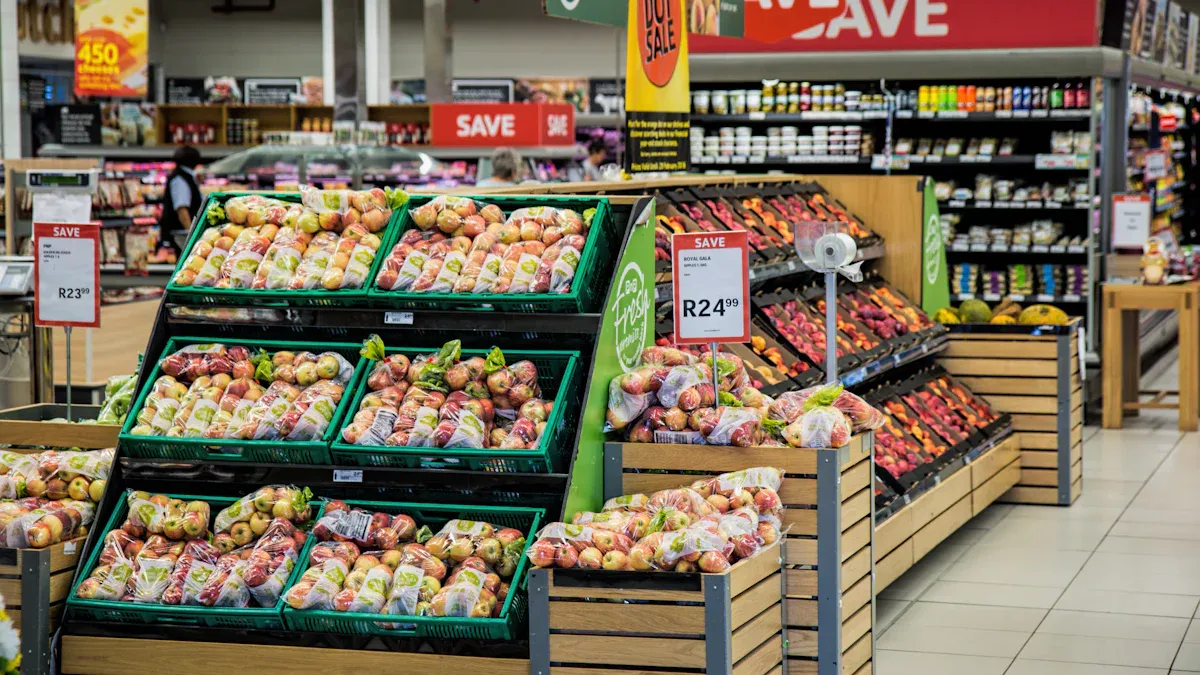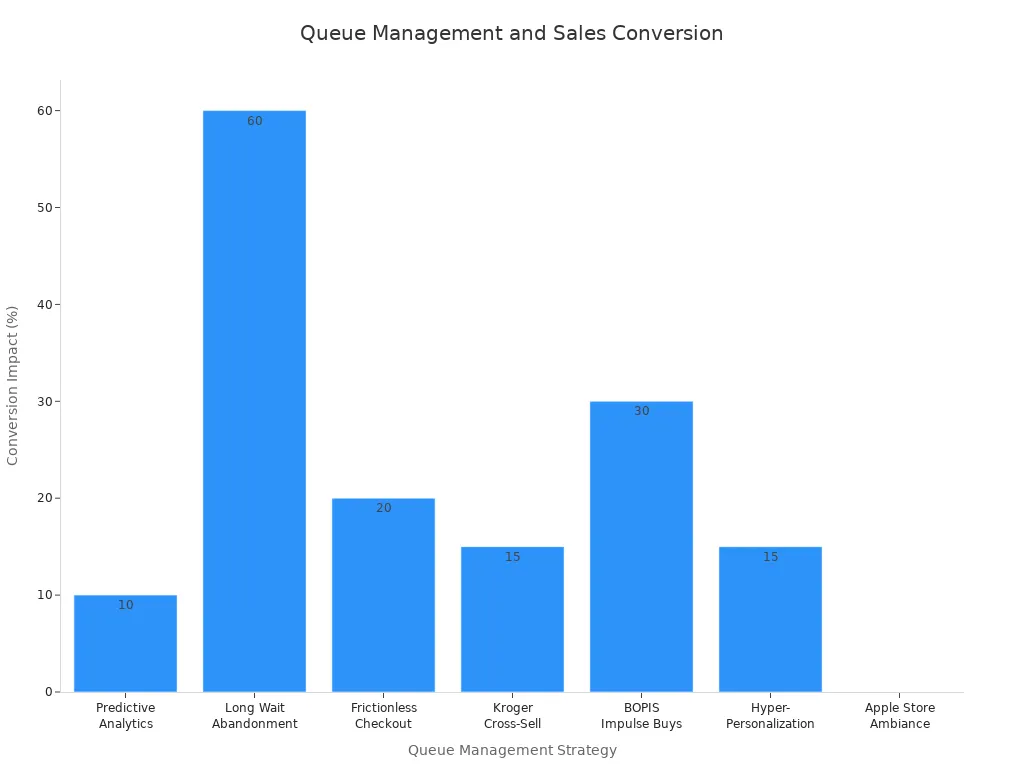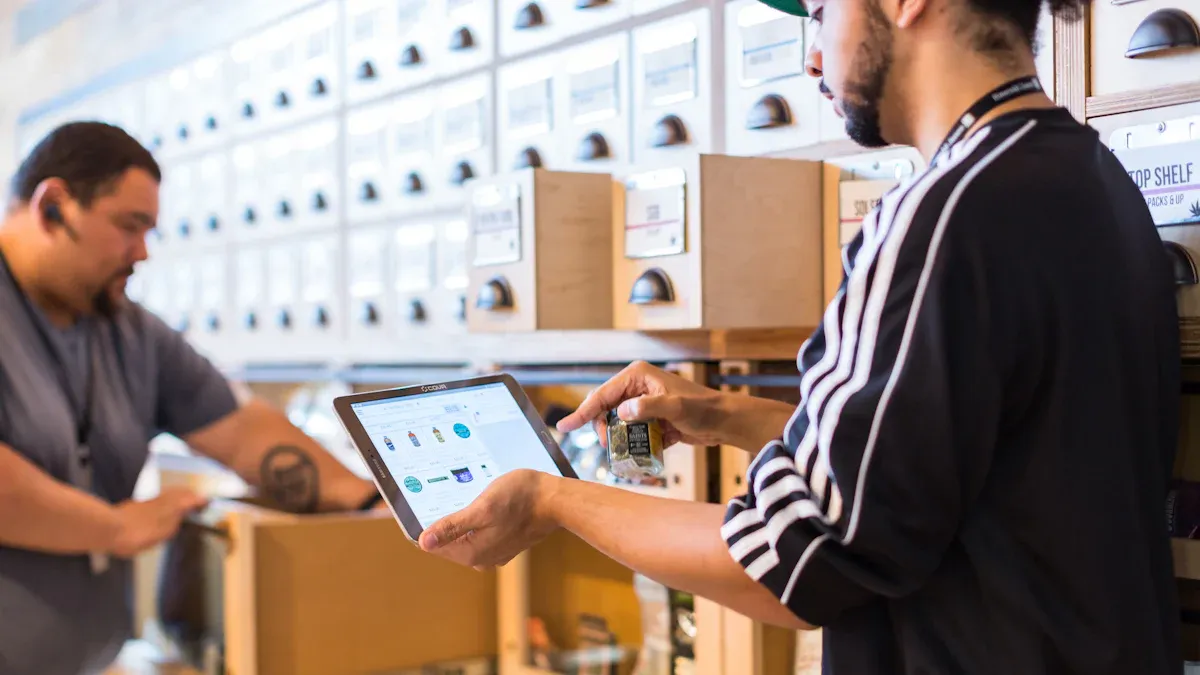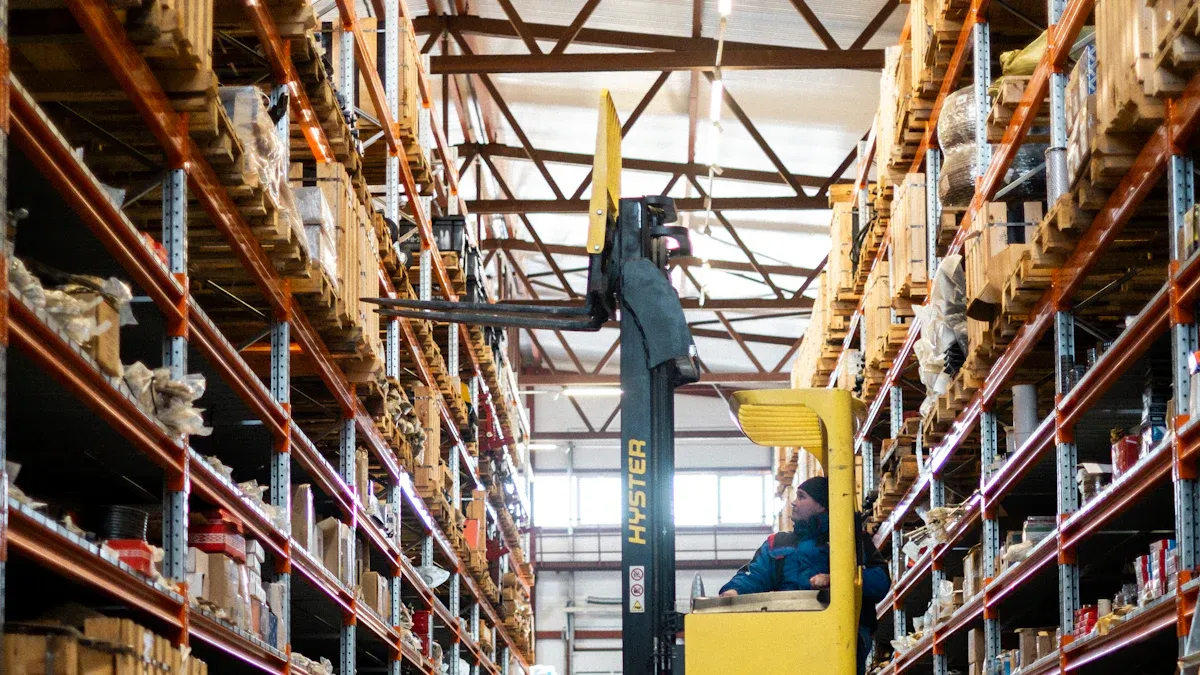Operations Management in Retail Stores: Frameworks for Optimization and Growth

Retail stores face constant pressure to improve both efficiency and growth. Studies show that effective Operations Management boosts sales and streamlines daily tasks. You can use traffic counters and data-driven scheduling to simplify workflows. Stores with a customer-focused approach often see higher satisfaction and better profits.
Streamlined processes and advanced technology make your business more competitive.
Customer engagement strategies help you keep shoppers happy and loyal.
Key Takeaways
Effective Operations Management boosts sales and streamlines daily tasks, leading to higher profits.
Utilize the 5S framework to keep your store organized and efficient, enhancing both staff and customer experiences.
Implement data-driven scheduling and inventory management to optimize staff levels and ensure product availability.
Engage your employees through open communication and recognition, which leads to better customer service and retention.
Continuously monitor KPIs to identify areas for improvement and drive growth in your retail operations.
Operations Management Essentials
Core Activities
You play a key role in shaping how your retail store runs every day. Operations Management covers many activities that keep your store efficient and profitable. The table below shows the most common core activities you handle:
Core Activity | Description |
|---|---|
Financial Management | Manage budgets, track sales and expenses, handle payroll, and create financial reports. |
Supply Chain Management | Oversee product sourcing, logistics, and warehouse operations. |
Employee Management | Recruit, train, schedule, and support your staff to boost performance. |
Customer Service | Operate POS systems, process payments, and fulfill orders quickly and securely. |
Sales Promotions | Run promotions, manage discounts, and keep pricing accurate. |
Loss Prevention | Create a safe environment, prevent theft, and follow health regulations. |
Visual Merchandising | Design store layouts and displays to attract and engage shoppers. |
Tip: When you focus on these activities, you set the foundation for a smooth and successful store operation.
Importance for Retail Growth
You drive growth by making each activity work together. Operations Management helps you streamline workflows and use resources wisely. When you improve inventory management, optimize supply chain operations, and boost workforce productivity, you make your store more efficient. You also enhance your store layout and workflow, which leads to better customer experiences.
Cost-effective processes increase profits.
Great customer experiences raise satisfaction.
Retail analytics show that stores using strong Operations Management see higher revenue growth. Customer management and machine learning tools help you understand shoppers and forecast demand. These tools let you offer personalized recommendations and keep shelves stocked, which boosts sales.
You also build a strong team. Well-trained employees give better service and work harder. When you lead your team well, you create consistency and keep customers coming back. Adaptability and innovation help you stay ahead in the retail sector.
Process Optimization
5S Framework
You can use the 5S framework to keep your store organized and efficient. This method comes from Japanese manufacturing, but it works well in retail too. The 5S steps help you create a clean, safe, and productive environment for both staff and customers.
Step | Description |
|---|---|
Sort | Separate what you need from what you do not. Use red tags to mark items that cause problems. |
Straighten | Put things in the best place for easy use and safety. |
Shine | Clean your store and equipment. Spot issues while you clean. |
Standardize | Set rules and visuals to keep things tidy and organized. |
Sustain | Make 5S a habit with regular checks and ongoing improvements. |
Tip: Try using the 5S steps in your stockroom. Remove old or damaged products, label shelves, and set a cleaning schedule. Your team will find items faster, and your store will look better for customers.
Lean Principles
Lean principles help you cut waste and boost value for your shoppers. You focus on what matters most to your customers and remove steps that do not add value. Lean thinking uses five main ideas:
Lean Principle | Description |
|---|---|
Value | Find out what your customers want most. |
Value Stream | Map every step in your process to spot waste. |
Flow | Make sure products move smoothly from backroom to sales floor. |
Pull | Restock based on real customer demand, not just guesses. |
Perfection | Keep improving your processes to get rid of waste. |
Lean helps you spot and remove tasks that do not help your store.
You can make your team more productive and cut down on delays.
When you involve your staff, you build a culture that always looks for ways to improve.
Many big retail chains use Lean to manage inventory and work with suppliers. For example, you can track your stock in real time to avoid running out or having too much. You can also work closely with suppliers to make sure you get what you need, when you need it.
Practice | Impact on Retail Chains |
|---|---|
Cuts storage costs and reduces losses from unsold goods | |
Streamlining operations | Makes your store more efficient and lowers labor costs |
Note: Lean is not a one-time fix. You should use it as a cycle, always looking for small ways to make your store better. This ongoing improvement is called "Kaizen."
Queue Management
Queue management is a key part of Operations Management in retail. When you manage lines well, you make shopping easier and faster for your customers. Research shows that shorter wait times lead to happier shoppers and more sales.
Less time in line means more time to shop.
Every minute spent waiting can lower the chance of a sale.
Evidence Description | Key Insight |
|---|---|
QMS reduces waiting times and enhances operational efficiency. | This leads to a positive customer experience, crucial for loyalty and repeat business. |
Quick and organized service correlates with increased sales. | Customers are more likely to complete purchases with shorter wait times. |
Effective queue management is indispensable for customer satisfaction. | Long queues negatively impact the customer journey. |
QMS allows for proactive customer feedback. | This enables real-time adjustments to improve the customer experience. |
70% of customers will not return if they face long lines even once.
60% of shoppers leave their carts if the wait is too long.
Frictionless checkout can boost sales conversions by up to 20%.

You can use queue management systems to track lines in real time. These systems help you move staff to busy areas and keep lines moving. Some stores use AI tools to schedule top employees during peak hours. This makes your store run smoother and keeps customers happy.
Remember: Good queue management does more than speed up checkout. It helps you keep customers coming back and increases your sales.
Technology and Automation

POS Systems
You can transform your store with modern POS systems. These platforms help you manage sales, inventory, and customer data in real time. Many retailers now use cloud-based POS systems. Over 72% of stores adopted these systems in 2025, and the market keeps growing. You can offer flexible payment options, including contactless payments and self-checkout. This makes shopping faster and easier for your customers.
Advancement Type | Description |
|---|---|
Cloud-Based and Unified Commerce | Most retailers use cloud-based POS for better access and updates. |
AI and Smart Analytics | Many POS platforms include AI for inventory and customer insights. |
Flexible Payment and Enhanced Security | You can offer more payment choices and keep customer data safe. |
Mobile and Self-Service Solutions | Mobile POS and self-checkout are popular with shoppers. |
Sustainability and Subscription Models | Stores use energy-efficient hardware and subscription pricing for POS systems. |
Tip: You can let customers check out anywhere in the store, pick up online orders, and pay with their phones. This improves the shopping experience and keeps customers coming back.
Automation Tools
You can use automation tools to make your store run smoothly. These tools help you save time and reduce errors. Common automation tools include inventory management systems, omnichannel POS, robotic process automation, CRM systems, AI-powered personalization, self-checkout kiosks, automated return management, and automated store planning.
Inventory Management Systems update stock levels instantly.
Self-checkout kiosks speed up the checkout process.
Automated return management makes returns easy for customers.
Benefit | Description |
|---|---|
Automation speeds up service and daily tasks. | |
Enhanced accuracy | You make fewer mistakes with automated systems. |
Cost savings | You spend less on labor and inventory. |
Improved customer experience | Customers get faster service and personalized recommendations. |
Better decision-making | Automated systems give you data to make smart choices. |
Over half of shoppers leave if lines are too long. Automation helps you keep them in your store.
Many customers cannot find products. Automation solves this by tracking inventory and guiding shoppers.
Data Analysis
You can use data analysis to make better decisions in your store. Data helps you understand what customers want and how they shop. You can track sales, inventory, and customer behavior. Many retailers use dashboards to see store performance at a glance. You can spot trends, find problems, and improve your store.
Data analytics help you plan inventory and forecast sales.
You can personalize customer interactions and run targeted marketing campaigns.
Grocery stores increased earnings by 2% with advanced analytics.
Fashion retailers boosted sales by 10% by using data to optimize stock.
Note: Operations Management becomes much easier when you use technology and automation. You can improve efficiency, accuracy, and customer satisfaction.
Inventory and Store Layout

Inventory Management
You need strong inventory management to keep your store running smoothly. When you track your stock in real time, you can make smart decisions and avoid running out of popular items. Accurate inventory data helps you respond quickly to changes in demand. This keeps your customers happy and coming back.
Technique | Description |
|---|---|
Accurate Demand Forecasting | Use past sales and trends to predict what you need. |
Real-Time Inventory Tracking | Watch your stock levels live so you know when to reorder. |
Safety Stock and Reorder Points | Keep a buffer of extra items and set alerts for low stock. |
Supplier Relationship Management | Build strong ties with suppliers for fast and reliable deliveries. |
Just-in-Time (JIT) Inventory | Order products only when you need them to avoid too much stock. |
Leveraging Data Analytics | Use data to spot patterns and prevent running out or overstocking. |
Automated inventory systems improve your turnover ratio and make sure products are always available. Demand forecasting helps you cut costs and meet customer needs. Good supplier relationships keep your shelves stocked and your customers satisfied.
Ensuring products are available when customers need them enhances customer satisfaction and loyalty, leading to repeat business and positive word-of-mouth.
When you keep the right amount of stock, you avoid backorders and boost your store’s reputation. This leads to better business performance and stronger customer relationships.
Store Layout Adjustments
You can increase sales and improve customer flow by making smart changes to your store layout. Start by creating an engaging path that encourages shoppers to explore. Use clear signage and place products where customers can find them easily. This makes shopping simple and enjoyable.
Create an engaging customer flow to encourage exploration.
Use signage and product placement to guide shoppers.
Add visual displays to influence buying decisions.
Change layouts for seasons to keep things fresh.
Arrange complementary products together to boost related sales.
Place featured items in high-traffic areas to grab attention.
Use end-of-aisle displays for impulse buys.
Efficient use of store space is essential for displaying products attractively, maximizing visibility, and enhancing the shopping experience.
Clear signs help customers find what they want fast. When you adjust your layout, you make shopping easier and increase the chance of more sales.
Staff and Labor Models
Scheduling Optimization
You can improve your store’s performance by optimizing staff schedules. Many retail stores struggle with improper scheduling. This often leads to too few employees during busy times and too many during slow periods. These mistakes can cause lost sales and higher labor costs. You need to match staffing levels with customer demand to avoid these problems.
Use scheduling software to automate and optimize shifts.
Offer flexible scheduling to meet employee needs.
Allow shift swapping so staff can cover each other.
Analyze sales patterns to align staffing with busy hours.
When you use these strategies, you lower labor costs and prevent overstaffing or understaffing. Customers get better service because you have enough staff during peak times. Employees feel happier when their schedules fit their preferences. Stores that use better scheduling practices see a 30% increase in employee retention. Flexible scheduling can reduce turnover rates by 25-50%. Neiman Marcus saw a 20% drop in turnover after adding flexible schedules. Many employees leave retail jobs because of poor scheduling, so making improvements helps you keep your best workers.
Tip: Happy employees stay longer and serve customers better. Good scheduling is key to a strong team.
Staff Engagement
You can boost productivity and sales by engaging your staff. Engaged employees work harder, stay longer, and handle challenges well. Open communication helps your team feel valued. Recognize achievements, such as “Employee of the Month,” to show appreciation. Offer training and growth opportunities to keep staff motivated. Support well-being with wellness programs and encourage team activities for better collaboration.
Engagement Practice | Benefit |
|---|---|
Open communication | Informed and valued employees |
Recognition programs | Higher job satisfaction |
Growth opportunities | Increased motivation |
Wellness initiatives | Healthier work environment |
Team activities | Stronger teamwork |
Companies with high employee engagement see better customer experiences and higher profits. A Gallup study found that boosting engagement reduces absenteeism by 51%. Stores with engaged staff have 18% higher customer retention rates. Engaged employees create positive energy, which leads to happier customers and more sales.
Engaged employees lead to better customer satisfaction and increased spending.
Retailers with top employee experience often achieve top customer experience scores.
Remember: When you invest in your team, you build a store where both employees and customers thrive.
Customer Experience
Personalization
You can make each customer feel special by using personalization in your store. Personalization means you adjust the shopping experience to fit each shopper’s needs and interests. When you do this well, you help customers feel valued and understood.
Improved customer satisfaction happens when you give tailored recommendations. Shoppers find what they want faster and enjoy their visits more.
You increase customer lifetime value by meeting unique needs. Customers who feel understood spend more over time.
Satisfied customers become brand advocates. They tell friends and family about your store.
You can use several strategies to boost loyalty:
Go beyond basic data. Collect details about shopping habits, preferences, and birthdays to build strong customer profiles.
Segment with purpose. Group customers by age, interests, or shopping patterns. Offer deals that match their needs.
Personalize key moments. Change rewards or messages based on what customers do in real time.
Give customers control. Let them pick their rewards and manage their preferences.
Personalized loyalty messages that celebrate milestones, like birthdays or anniversaries, help create emotional bonds. When customers feel connected to your brand, they stay loyal even if other stores offer discounts.
Tip: Start small. Use customer names in emails or suggest products based on past purchases. These simple steps can make a big difference.
Feedback Systems
You can improve your store by listening to your customers. Feedback systems help you learn what works and what needs fixing. When you gather feedback, you spot problems quickly and make changes that matter.
Evidence Type | Description |
|---|---|
Identify Inefficiencies | Regular feedback shows where delays or frustrations happen, like long checkout lines. |
Workflow Management | Real-time feedback lets you respond fast, such as sending more staff to busy registers. |
Workflow Automation | Automating tasks that customers dislike, like slow returns, frees up staff for more important work. |
Data Analytics | Analyzing feedback helps you decide how to arrange products or manage inventory. |
Unified Management System | Combining feedback with store data helps you fix issues like stockouts and speed up order fulfillment. |
You can use surveys, suggestion boxes, or digital kiosks to collect feedback. When you act on what customers say, you show that you care. This builds trust and keeps shoppers coming back.
Note: Quick responses to feedback can turn a bad experience into a positive one. Always thank customers for sharing their thoughts.
Measuring Success
KPIs in Operations Management
You need to track the right numbers to know if your store is doing well. Key Performance Indicators, or KPIs, help you measure how your store performs every day. When you watch these numbers, you can spot problems early and make smart choices.
Gross Sales Revenue (GSR): This shows the total value of all sales in a set time.
Average Order Value (AOV): This tells you how much, on average, each customer spends per visit.
Customer Lifetime Value (CLV): This measures the total profit you earn from a customer over their time with your store.
Customer Retention Rate (CRR): This shows how many customers keep coming back.
Customer Satisfaction Index (CSI): This measures how happy your customers are with your products and service.
Stock Turnover (ST): This tells you how often you sell and replace your inventory.
Out-of-Stock Rate (OSR): This shows how often items are missing when customers want to buy them.
Gross Profit Margin (GPM): This measures how much money you keep after paying for the products you sell.
Tip: Review these KPIs often. You will see what works and where you need to improve.
Continuous Improvement
You can make your store better by always looking for ways to improve. Continuous improvement means you never stop finding small changes that help your business grow. When you use this approach, you build a strong team and a better store.
Benefit | Description |
|---|---|
You make your processes faster and cut costs. | |
You keep making your service better so customers stay happy. | |
Increasing Profitability | You find new ways to earn more money and grow your business. |
Driving Innovation | You encourage your team to try new ideas and follow trends. |
Ensuring Compliance and Safety | You follow rules and keep your store safe for everyone. |
Building a Culture of Learning | You help your team learn and share new ways to improve the store. |
When you focus on continuous improvement, you make Operations Management a daily habit. Your store becomes more efficient, your team feels valued, and your customers notice the difference.
You have learned key frameworks like 5S, Lean, and data-driven scheduling to boost your store’s performance. Focus on small changes each day to keep improving. Try one new strategy this week and see the results.
Review your KPIs.
Talk with your team.
Explore new tools.
Stay curious and keep learning. Your actions today shape your store’s future. For more tips, check out retail management guides or join industry webinars.
FAQ
What is the most important part of operations management in retail?
You need to focus on making your store run smoothly every day. Strong inventory control, good staff scheduling, and great customer service help you succeed. These areas keep your store efficient and your customers happy.
How can technology help my retail store grow?
You can use technology to track sales, manage inventory, and learn about your customers. Tools like POS systems and data dashboards help you make smart choices. Technology saves you time and helps you spot trends.
Why should I use the 5S framework in my store?
The 5S framework helps you keep your store clean and organized. You find items faster and reduce mistakes. Your team works better, and your customers enjoy shopping in a tidy space.
How do I measure success in retail operations?
You can track key numbers like sales, customer satisfaction, and inventory turnover. Use a table to watch your progress:
KPI | What It Shows |
|---|---|
Sales Revenue | Total money earned |
Customer Satisfaction | How happy shoppers are |
Stock Turnover | How fast items sell |
What is continuous improvement, and why does it matter?
Continuous improvement means you always look for ways to get better. You make small changes often. This helps your store stay ahead, keeps your team motivated, and makes customers want to return.
See Also
Transforming Online Store Management With AI-Driven Tools
Essential Insights on AI-Enhanced Corner Stores for Retailers
The Future of Retail Lies in AI-Driven Stores
Understanding Corner Store Fundamentals and Their Importance
